
分享科學知識,傳播健康理念
Talking about the microorganisms in the mouth and oral health care
When Leeuwenhoek invented the microscope in 1674, mankind began the era of studying the microscopic world. In 1683, he found that there were many "tiny animals" living in his mouth, even more than the population of his native Netherlands. More, and that's bacteria. This is the first time humans have seen microbes and realized that there are many living things in our mouths.
As with many innovative scientific discoveries, no one believed the crazy Dutchman at first. He spent decades writing to the Royal Society of London, describing microbes in detail to convince the world. When others looked closely through Leeuwenhoek's microscope, his astonishing discovery was confirmed, and the field of microbiology was born.
Our mouths are filled with billions of microbes. We swallow hundreds of millions of bacteria from our saliva every day. Bacteria in the mouth thrive due to our constant supply of nutrients and warmth. Like us, these microbes are fighting for their own survival, clinging to places like the tongue, teeth and gums to keep them from being washed away when we swallow.
Our detailed understanding of oral microbes is a matter of recent decades, compared to hundreds of years in microbiology. We now know that there are hundreds of different microbes living in our mouths. The complex oral microbiome is fairly stable over an adult's lifetime, but some major changes can occur in older adults. Decreased oral microbial communities in the elderly provide an opportunity for pathogens to colonize and multiply, which can affect not only our teeth and gums, but our entire body.
The mouth is the window to the health of the whole body
The mouth reflects overall health at any stage of life and represents the critical first point of contact between the digestive tract, immune system and the outside world. If we think of the gastrointestinal tract as a river, the mouth is the source from which everything flows downstream. In fact, most systemic diseases produce oral symptoms.
There is also a surprising correlation between oral hygiene and dementia, for example. A large twin study showed that early tooth loss (before age 35) was associated with higher levels of dementia. Even more startling data is that people who don't brush their teeth every day have a 22-65% higher risk of developing dementia than those who brush their teeth three times a day.
How might careful brushing affect dementia? As a person ages, saliva production slows, which can exacerbate mild inflammation in the mouth because saliva has antibacterial properties. It also reduces a person's ability to flush and swallow oral microbes. This allows more microbes and their inflammatory products to leak into the body's circulation, triggering more inflammation. Studies have shown that when the number of antibodies to oral microbes in the blood circulation increases, it indicates that these microbes are entering the body and being seen by the immune system, which is directly linked to an increased risk of Alzheimer's disease.
The importance of oral health is not just about giving you a charming smile, it is a window into the health of our entire body and the key to detecting and preventing health problems. Earlier we briefly discussed the impact of oral flora on overall health. If you are interested, you can refer to: Oral flora also affects our gut and overall health. Today we are still focusing on the oral flora and oral health.
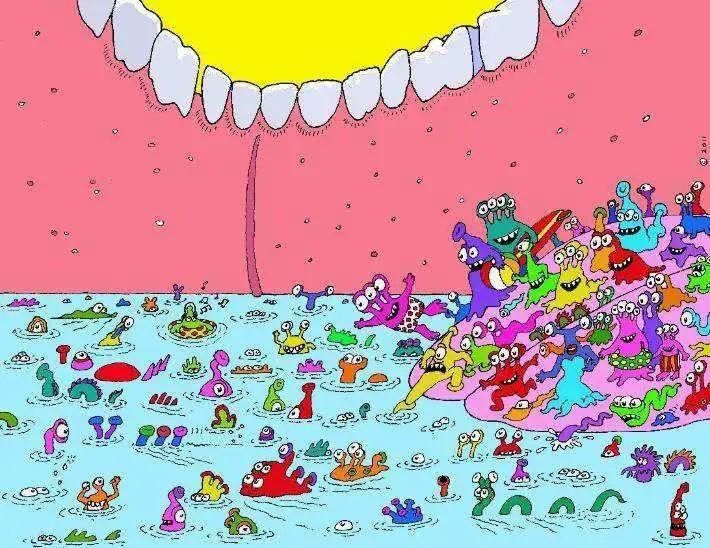
Oral Microbiome and Periodontitis
Oral microbes live in a tiny "city" of microbes called a "biofilm." The "skyscrapers" of these cities are built from molecules called exopolysaccharides (EPS), which form sticky structures in and around microbes, protecting them from harsh environments. Biofilms are almost everywhere, but the most common site in the human body is the mouth, in the form of dental plaque.
It matters which microorganisms inhabit the biofilm, depending on who attaches to the biofilm first. Early colonizers determine which microbes will colonize later, that is, which "neighbors" will move in, which determines the composition of the oral "community", for better or worse. The most common first colonizer is Streptococcus, which helps other beneficial microbes enter later. Hundreds of microbial species may enter dental plaque as other bacteria colonize and expand "communities."
Many of us have experienced plaque buildup to some extent. For example, the calculus that the dentist scrapes off our teeth when we clean our teeth is the calcification of ancient biofilm material formed by bacteria. From the moment you wash your teeth, plaque starts to build up again and builds up in areas that are hard to clean when we usually brush our teeth.
Meanwhile, direct contact between biofilm and gum tissue can cause irritation when plaque builds up on and under our gums. The gums become inflamed, and this inflammation summons macrophages and neutrophils whose job it is to destroy and kill microbes. However, for many people, prolonged and repeated inflammation can cause collateral damage to the underlying tissue, which can lead to periodontitis. As the disease progresses, these microbes become more pathogenic, which can further damage soft tissue and underlying bone structures.
Periodontitis and dental caries are two of the most common infectious diseases in the world. Almost everyone has at least one cavity, and as many as half experience some form of gum disease. However, unlike AIDS, malaria, tuberculosis and other well-known infectious diseases, oral diseases are usually caused by the imbalance of oral flora leading to the proliferation of certain harmful microorganisms, rather than a specific pathogen. Periodontitis patients have markedly different oral microbiota. Porphyromonas gingivalis and Treponema tartarus are often the microbial culprits behind the disease. Germ-free lab animals don't get periodontitis because they don't have any microorganisms.
Older adults appear to be more prone to gum disease, with 47.2 percent of adults 30 and older having some form of periodontal disease, and 70.1 percent of adults 65 and older, according to the Centers for Disease Control and Prevention. % suffer from periodontal disease. What we need to know, however, is that this is not a normal part of aging, and good hygiene and a healthy oral flora can help prevent this disease. Of course, the most important thing is to brush and clean your teeth every day.
In the future, we might also be able to use probiotics to help "good" microbes colonize the gums and drive pathogens away. Lactobacillus and bifidobacteria, the two most common bacterial genera for probiotics, are a normal part of the oral flora and are generally considered safe to be ingested by oral probiotics and probiotic-containing foods, including Buttermilk, cheese, sauerkraut, pickles, and more.
Studies have found that topical application of Lactobacillus acidophilus cultures can significantly help patients with periodontal disease recover. Studies have also shown that probiotics Lactobacillus reuteri, Lactobacillus brevis CD2, Lactobacillus casei Shirota, Lactobacillus salivarius WB21, and Bacillus subtilis can help improve gum health and reduce the number of periodontal pathogens.
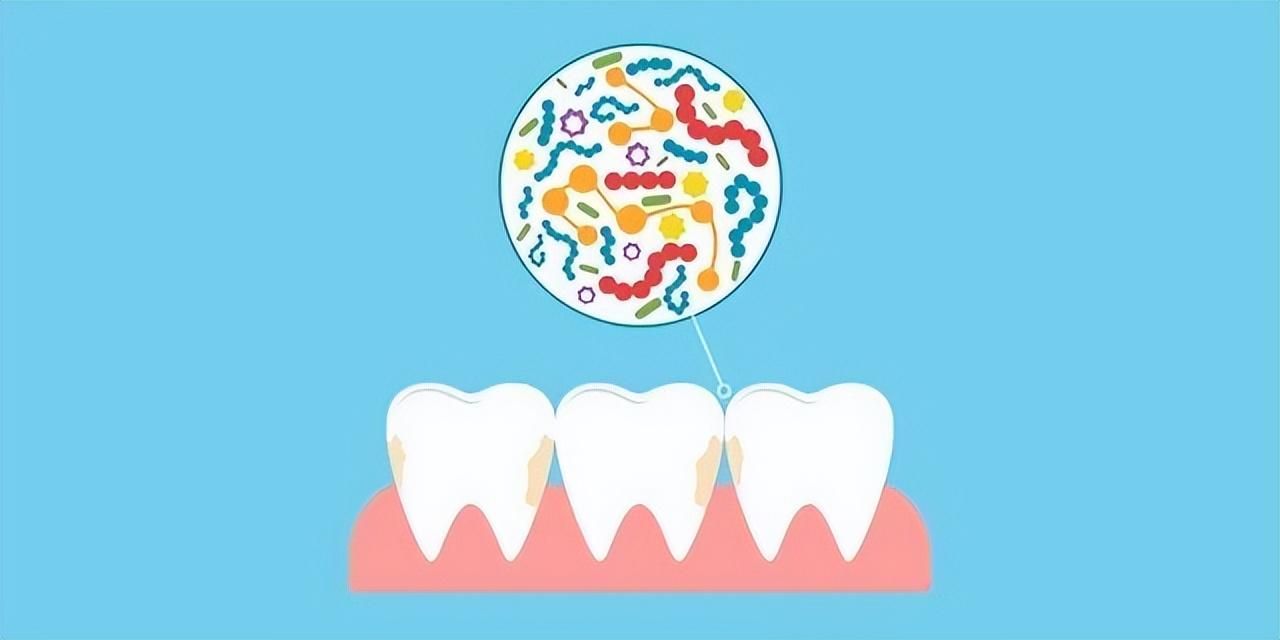
Sugar isn't the culprit in tooth decay, microbes are
Like periodontitis, microbes are at the heart of caries. When biofilms form on the enamel of our teeth, bacteria associated with dental caries, such as Streptococcus mutans, may colonize the teeth and alter the dental flora. The diversity of microorganisms decreases, and the number of harmful microorganisms such as Streptococcus mutans increases significantly, which can proliferate from about 2% to more than 30%.
These microbes stay on the surface of the teeth, happily chewing on the sugars and other carbohydrates we feed them every day, and they produce acids that microbes can tolerate, but in too much quantities our teeth can't. Tooth decay occurs when acid dissolves our tooth enamel and erodes the underlying dentin layer. This can lead to the familiar toothache, sensitivity, and mild to sharp pain when biting or eating something sweet, hot or cold.
Therefore, tooth decay is not caused by sugar directly, but by certain sugar-eating microorganisms. These microorganisms produce acids that dissolve tooth enamel and form tooth decay. We often overlook the role of microbes in treating caries and instead blame the sugar we eat. Germ-free animals that eat a high-sugar diet do not get cavities.
In addition to well-known oral hygiene habits and dietary habits, such as frequent brushing and less sugar, an ecologically balanced and diverse oral flora may also help reduce the incidence of dental caries. Some studies have shown that ingesting Lactobacillus or Bifidobacterium can reduce the amount of Streptococcus mutans in your saliva. Streptococcus salivarius M18 destroys harmful Streptococcus mutans bacteria and helps neutralize the acidity in the mouth. Boosting microbial defenses can help fight the root cause of tooth decay.
Saliva plays an important role in maintaining oral health
Saliva plays a vital role in maintaining oral health, as it lubricates our mouths, helps digest food, and contains several defensive compounds that can help control the excessive build-up of microbial plaque. Saliva is also full of beneficial microbes, with about 100 million bacteria per milliliter of saliva. Good saliva flow provides moisture and nutrients to microbes, buffering and flushing away acids from caries-causing microbes on the teeth.
Each of us has a unique microbiome in our saliva that remains fairly stable over time. But as we age, our saliva dries up, with one in three older adults and 40 percent of people over 80 experiencing low salivation and dry mouth. Dry mouth can make chewing, eating, swallowing, and even speaking more difficult. Without the defensive properties and nutrient delivery of saliva, beneficial protective microbes cannot thrive, making us more susceptible to pathogenic infections.
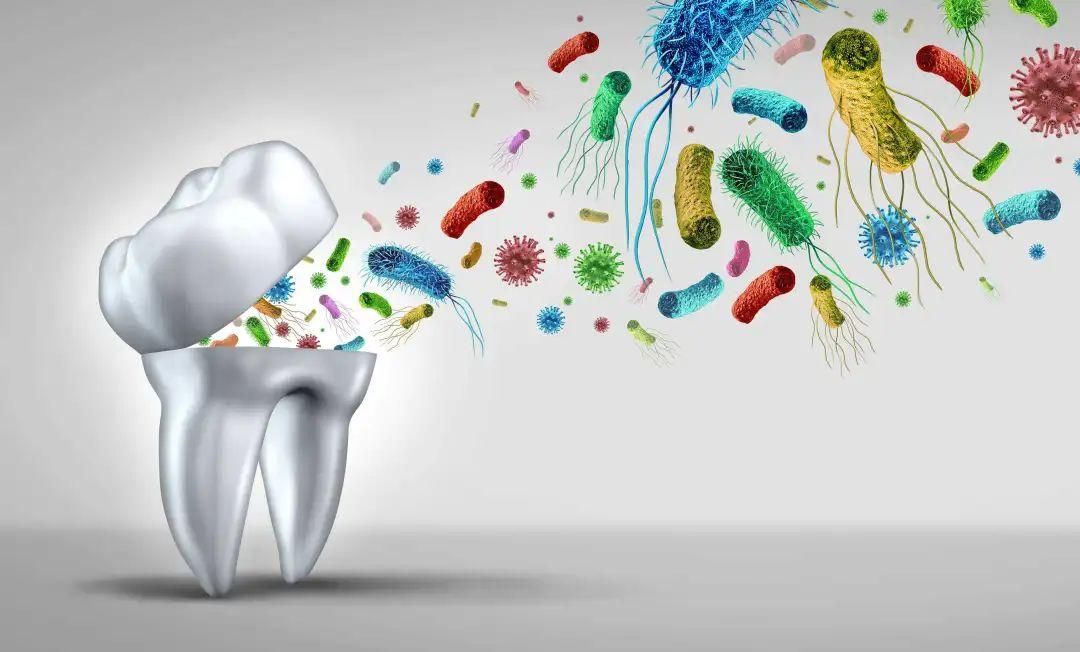
Dry mouth is not inevitable in later life, as healthy older adults who are not receiving medication do not experience a significant decrease in saliva volume. If you suffer from dry mouth, in order to relieve the pain, it is recommended that you drink plenty of water and take small sips every now and then to keep your mouth moist. Also, avoid caffeinated and sugar-sweetened beverages, which can dry out your mouth.
Certain probiotics can help stimulate saliva production, and studies have shown that Lactobacillus reuteri DSM 17938, Lactobacillus rhamnosus GG and Lactobacillus rhamnosus LC705, and Propionibacterium freudenreichii subsp. JS are all promising Stimulates microbial-rich saliva to reduce the risk of hyposalivation and the feeling of dry mouth.
In fact, many commonly prescribed medications can also cause dry mouth. The risk increases when four or more drugs are taken each day. If you are taking medication, try substituting or changing the dose with another medication. If medication cannot be avoided, it is advisable to drink plenty of water and avoid tobacco, alcohol, caffeinated, and sugar-sweetened beverages. In the future, sugar-free probiotic chewing gum may be a simple and easy way to improve gum health and reduce periodontal disease through chewing, which not only provides oral probiotics, but the act of chewing itself stimulates saliva secretion.
Microbes and Bad Breath
About 25% of people suffer from bad breath, which seriously affects the quality of life. Microbes that live deep in the tongue can cause bad breath. These microbes produce 150 different volatile molecules that emit foul odors, including sulfur-containing compounds like hydrogen sulfide, and others that smell like putrefaction. Bad breath is not caused by a single microorganism, it is the result of a combination of microorganisms living on the tongue.
Older people are especially prone to bad breath, which is caused by insufficient saliva production, because there is not enough saliva to get rid of these smelly microbes and their compounds. If we have a dry mouth while we sleep, this can also lead to bad wake-up bad breath. In addition, ill-fitting dentures can allow bacteria to grow in the space between the dentures, causing microorganisms to produce unpleasant molecules.
Traditional methods of controlling bad breath include brushing, flossing, scraping, mouthwash and drinking plenty of water. All of these have only limited effect. Recent clinical studies suggest that replacing odor-producing bacteria with good bacteria may be a more effective way to control bad breath. Some specific strains of probiotics have been shown to alter bad breath, including Escherichia coli Nissle 1917, Streptococcus salivarius K12.
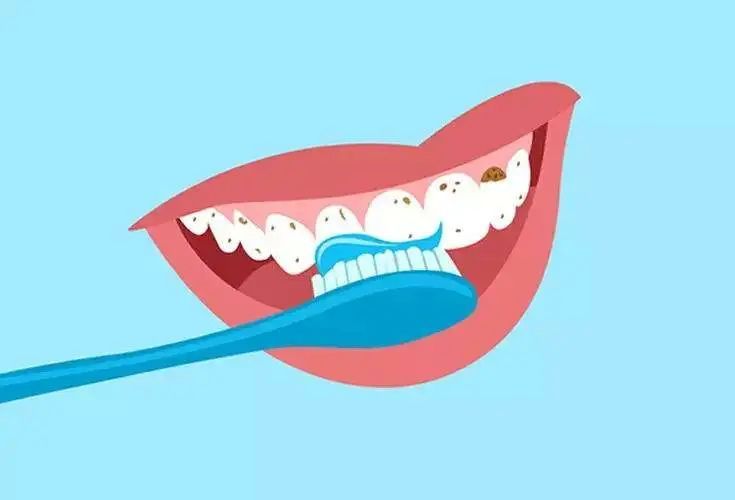
How about mouthwash?
Mouthwash is a popular oral cleaning product in recent years. So, can we directly use mouthwash to kill all the harmful microorganisms in the mouth?
Leeuwenhoek tried the earliest "mouthwash" experiments centuries ago. He knew both alcohol and vinegar could kill the "tiny animals" he scraped from his mouth. So he did what any good scientist would do, which was experimenting with himself, he tried gargling with alcohol and vinegar, and then he checked the microbes in his mouth. However, this didn't work and the microbes were unaffected, probably because the microbes were surrounded by a strong protective biofilm. His findings still hold today, and common over-the-counter mouthwashes are usually only partially effective. While they're great at rinsing food particles off the teeth, limiting plaque above the gum line and refreshing odors, they don't remove the microbes that cause tooth decay or those below the gum line.
Commercial mouthwashes were originally developed to kill the bacteria that cause bad breath. New mouthwashes are starting to emerge as researchers and clinicians begin to understand plaque and its relationship to gingivitis. The first antibacterial mouthwash shown to prevent plaque-induced gingivitis was chlorhexidine, which later became a prescription drug. It prevents the buildup of plaque, and for those without brushing skills, such as elderly patients who cannot operate the instruments needed to clean their teeth, it can help reduce plaque and reduce the risk of gingivitis. However, it's not a good idea to use it consistently, it doesn't touch under the gums to combat devastating gum disease, and it can also have certain side effects with long-term use.
So, what about over-the-counter antibacterial mouthwashes? Just like chlorhexidine, which kills both beneficial and harmful microbes indiscriminately, they also don't necessarily prevent periodontal disease. While generally harmless, long-term use can cause some side effects, including stains and antimicrobial resistance.
In recent years, mouthwashes containing probiotics have also become popular, which may be more effective than traditional mouthwashes. Published preliminary findings suggest that a probiotic mouthwash containing three different oral Streptococcus bacteria can reduce the amount of plaque and Streptococcus mutans associated with tooth decay.
Finally, we still want to emphasize that mouthwash does not replace manual cleaning. Mouthwash is topical and temporary, and it cannot reach certain key areas. This is only one component of oral hygiene, we still need to keep our mouth clean through frequent brushing, cleaning between teeth and regular professional check-ups.
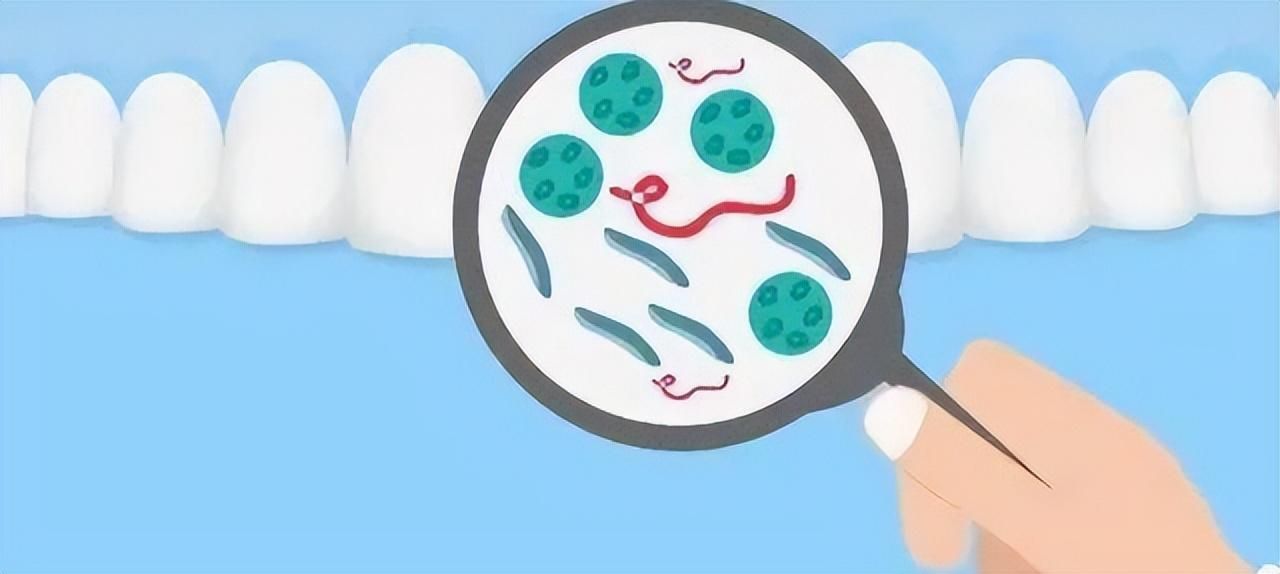
Smoking affects oral flora
Smoking also has profound effects on oral flora, as they are directly exposed to high concentrations of smoke. In the subgingival biofilm, smoking promotes the early colonization of pathogens that cause periodontal disease. Smoking also prevents normal microbes from colonizing the mouth early enough to make room for some unwanted pathogens to colonize.
Because of smokers' unhealthy oral flora and the direct negative effects of tobacco smoke on the oral tissues themselves, their mouths often heal less well when they seek treatment for periodontal disease. It is estimated that 42% of periodontitis is caused by smoking.
The oral flora of smokers is less stable, and the lack of healthy and diverse microorganisms can lead to pathogens to colonize the nasopharyngeal area, which can lead to additional upper respiratory problems, such as ear and throat infections, especially in the elderly, and Causes a buildup of bacteria that spread from the throat to the middle ear. To make matters worse, more gum disease in smokers means they are more likely to have bad breath because of the pathogenic microbes they carry.
The damage from smoking accumulates, which means the longer you smoke, the greater your risk of developing these diseases. Studies have shown that the use of tablets containing Lactobacillus salivarius WB21 can improve gum health and reduce the number of periodontal pathogens in dental plaque in high-risk smokers. Beneficial microbes in the oral cavity may help strengthen the barrier against invasion by pathogens that cause periodontal disease and upper respiratory tract infections. Of course, quitting smoking is the best defense and has immediate health benefits for people of any age.
Summarize
There are also a large number of microorganisms living in our oral cavity. With the progress of molecular science and technology, our understanding of oral microorganisms has been greatly improved. They not only affect our oral health, but also our overall health. It is important to develop good oral hygiene habits:
Early tooth loss is associated with higher levels of dementia. Regularly brushing your teeth may reduce your risk of dementia and Alzheimer's disease, ideally three times a day.
Regular brushing, cleaning between your teeth, and regular dental check-ups can greatly reduce your risk of gum disease and tooth decay as you age. Flossing your teeth is especially important for controlling plaque-producing microorganisms.
If you suffer from dry mouth, it is recommended to drink plenty of water and take a sip from time to time to keep your mouth moist. Medication is often one of the culprits, try substituting other medications or changing the dose. If medication cannot be avoided, it is advisable to drink plenty of water and avoid tobacco, alcohol, caffeinated, and sugar-sweetened beverages.
Alcohol-based mouthwashes are not effective at removing harmful microbes from the mouth, while antibacterial mouthwashes kill both beneficial and harmful microbes indiscriminately. This allows the microbes that cause bad breath to flourish without competition. To treat bad breath, it is recommended to brush your teeth frequently.
Oral health largely depends on the balance between health-promoting and disease-associated bacteria in the mouth, considering that periodontitis, caries, bad breath and other oral problems are caused by the proliferation of harmful microorganisms in the mouth. cause, then we may also be able to get rid of these problems in the future by replacing "bad" microbes with "good" ones. Oral probiotics are promising oral health products and typically include lactobacilli and bifidobacteria. We can improve our oral flora with some fermented foods or consider taking supplements that contain specific strains. Probiotic lozenges, probiotic gum, and probiotic toothpaste or probiotic mouthwash may also help with bad breath and improve oral health. Regular use of these products, especially after antibiotic treatment and any dental check-ups, may help to recolonize healthy microbes and restore the balance of oral flora.
Dear viewers, what do you think after watching this? The comment area looks forward to your message.
Subscribe to me for something different every week!
Like my work?
Don't forget to support or like, so I know you are with me..
Comment…